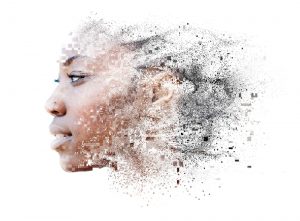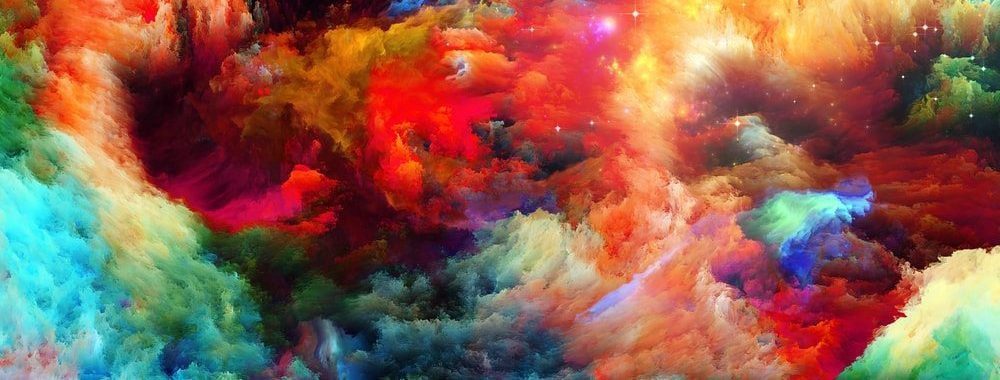0
You have 0 items in your cart

Consciousness is the essence of being aware and to realize the world around us. It is the window through which we understand our environment emotionally, artistically, scientifically, and spiritually. It is the state of awareness of an external object or something within the self. It is the ability to feel, to experience and a sense of selfhood at any given period.
Philosophers have studied the mind for centuries but have not been able to fully grasp the phenomenon of consciousness. Neuroscience in the recent years has made strides into understanding how the mind works. Here are some theories:
 Cogito ergo sum
Cogito ergo sumThe 17th-century philosopher Rene Descartes proposed this theory that translates to “I think therefore I am.” It goes on to say that the mere act of doubting your own existence is enough proof of the reality of your own mind — there must be a thinking entity for there to be this though in the first place. It is not an easy concept to grasp, though.
Researchers have been investigating for the last two decades to discover the specific neurons responsible for conscious experience. They have discovered an area of the brain that acts as an on/off switch. This area called claustrum can be electrically activated to instantly turn on the individual to consciousness and back to unconsciousness.
This theory was developed by the Neuroscientist Giulio Tononi. He theorizes that consciousness starts with the integrated information, working backward from here can help understand the physical processes giving rise to the phenomenon. It says that consciousness is an integration of a wide variety of information and the experience cannot be reduced. What you experience happens fully. The brain weaves a lot of complex information from many sensory systems and cognitive processes.
This theory suggests that consciousness operates more like a computer memory which can bring up retained memory even after the experience has passed. The stored memory can be sent to other parts of the brain, and this act of broadcasting information is what represents consciousness.
Even though science has not been able to explain how consciousness originates, we all know it originates from the brain. The how is what no one knows till today, how a subjective consciousness can come from an objective matter.
I will not let anyone walk through my mind with their dirty feet.
It is an evolutionary advantage to help distinguish between self and non-self so as to increase survival chances. To anticipate the actions and expectations of others

It is an innate potential in primates like humans that needs social experience over many years to develop fully. Different people develop different levels of theory of the mind hence the varying levels of empathy.
In simple terms, it means putting yourself in another person’s shoes, seeing the world from their perspective and acknowledging that they have a different viewpoint from your own.
As identified by Simon Baron-Cohen, infants understand attention in others as early as seven months. This is a critical precursor to developing theory if mind. They already know that seeing is a form of attention when directed at them taking into account the other person’s mental state.

Around age 2-5 when children are learning a language, they also develop the theory of mind hence it being closely intertwined with language according to a meta-analysis by Milligan, Astington, & Dack, (2007). Children must learn the meaning of words while denoting the mental states of the speaker, therefore, facilitating the development of the theory of mind.
Being aware and being conscious are two different concepts even though the words may seem to mean the same thing.
Being aware is a sense of our physical perception; it is a physical-related expression, being aware of reality due to the five sensations, knowledge and cognitive abilities.
Being conscious, on the other hand, is a state of awareness where the physical world obstructs no more. It has a lot to do with spiritual interactions. One has to be aware before to be conscious.
Knowledge makes one aware of the world realities which in turn make you conscious. Humans make good decisions when aware but make better decisions when conscious.
We are the cosmos made conscious and life is the means by which the universe understands itself.

With the growth of groups, there was the need to form institutions like family, property, money, and slavery, therefore, eliminating the laws of nature.
Other than these early groups, today people form groups for various reasons including:
 Groupthink
GroupthinkIt is a model of thinking that individuals engage in when they are deeply involved in a cohesive group. The desire for harmony in the given group results in deviant or incorrect decision-making.
It goes on to suggest that when in groups the views of individuals are more likely to shift to the extremes. The risk tends to be less while in groups that how they look when the decisions are made individually. Since the view is held by many like-minded people, it tends to look less dangerous than when an individual thinks of it alone.
 Deindividuation
DeindividuationIt simply means the loss of one’s individuality and becomes lost in the group. The individual will go along with whatever the group decides whether it is rioting, cyberbullying or even lynching. Individuals experience a sense of anonymity while in the group.
These three illustrations go to show that even though our consciousness was designed by evolution, the culture we find ourselves in keeps redesigning it.

The first three levels focus on an individual’s personal interest, the satisfaction of physiological needs including security, safety, emotional needs for love and belonging and the need to feel good about themselves through developing self-pride and a positive self-esteem.
The fourth level focuses on transformation, the learning how to manage, master, and release the subconscious fear-based beliefs that keep us anchored at the lower levels of consciousness. In this stage, we develop a sense of personal authority and a voice. We have learned how to master deficiency needs and can let go of the need to identify with a social environment.
The upper three levels focus on the need to find meaning and purpose to life. These are actualization through making a difference in the world, self-less living, and learning how to become our own self-witness. In these stages, we develop an inner compass and become trusting of other since most of the fears are gone.
Consciousness is the state of being aware of an external object or something within. It is the ability to feel, to experience and having a sense of selfhood.
Higher consciousness, on the other hand, is the consciousness of a higher self or God, something bigger than our ego-self. It is the part of humans that can transcend animal instincts.
Each human evolves and grows in consciousness in clearly defined stages, each stage focusing on a particular existential need. The seven stages conform to the human ability of the individual to satisfy their needs at a given stage in growth and development.
Consciousness is only possible through change; change is only possible through movement.
This Privacy Policy describes how SmartMinds Enterprise OÜ (“SmartMinds”, “we”, “us” or “our”) handles information about yourself that you may provide us with through your use of the Site or Service (“Personal Information”) and should be read along with our Terms of Use posted here, and all other operating rules and additional terms and conditions published on our Site.
SmartMinds is committed to keeping your information secure and managing it in accordance with our legal responsibilities under privacy and data protection laws where we operate. SmartMinds uses your Personal Information only in accordance with this Privacy Policy and Applicable Law. SmartMinds does not sell your Personal Information to third parties. Any capitalized terms not defined in this Privacy Policy are defined in the Terms of Use.
We employ the use of cookies. By using SmartMinds‘s website you consent to the use of cookies in accordance with SmartMinds’s privacy policy.
Most of the modern day interactive web sites use cookies to enable us to retrieve user details for each visit. Cookies are used in some areas of our site to enable the functionality of this area and ease of use for those people visiting. Some of our affiliate / advertising partners may also use cookies.
Unless otherwise stated, SmartMinds and/or it’s licensors own the intellectual property rights for all material on SmartMinds All intellectual property rights are reserved. You may view and/or print pages from https://smartminds.one for your own personal use subject to restrictions set in these terms and conditions.
You must not:
We will approve link requests from these organisations if we determine that: (a) the link would not reflect unfavourably on us or our accredited businesses (for example, trade associations or other organisations representing inherently suspect types of business, such as work-at-home opportunities, shall not be allowed to link); (b)the organisation does not have an unsatisfactory record with us; (c) the benefit to us from the visibility associated with the hyperlink outweighs the absence of SmartMinds; and (d) where the link is in the context of general resource information or is otherwise consistent with editorial content in a newsletter or similar product furthering the mission of the organisation.
These organisations may link to our home page, to publications or to other Web site information so long as the link: (a) is not in any way misleading; (b) does not falsely imply sponsorship, endorsement or approval of the linking party and its products or services; and (c) fits within the context of the linking party’s site.
If you are among the organizations listed in paragraph 2 above and are interested in linking to our website, you must notify us by sending an e-mail to Please include your name, your organisation name, contact information (such as a phone number and/or e-mail address) as well as the URL of your site, a list of any URLs from which you intend to link to our Web site, and a list of the URL(s) on our site to which you would like to link. Allow 2-3 weeks for a response.
Approved organizations may hyperlink to our Web site as follows:
No use of (name)’s logo or other artwork will be allowed for linking absent a trademark license agreement.
Without prior approval and express written permission, you may not create frames around our Web pages or use other techniques that alter in any way the visual presentation or appearance of our Web site.
We shall have no responsibility or liability for any content appearing on your Web site. You agree to indemnify and defend us against all claims arising out of or based upon your Website. No link(s) may appear on any page on your Web site or within any context containing content or materials that may be interpreted as libelous, obscene or criminal, or which infringes, otherwise violates, or advocates the infringement or other violation of, any third party rights.
We reserve the right at any time and in its sole discretion to request that you remove all links or any particular link to our Web site. You agree to immediately remove all links to our Web site upon such request. We also reserve the right to amend these terms and conditions and its linking policy at any time. By continuing to link to our Web site, you agree to be bound to and abide by these linking terms and conditions.
If you find any link on our Web site or any linked web site objectionable for any reason, you may contact us about this. We will consider requests to remove links but will have no obligation to do so or to respond directly to you.
Whilst we endeavour to ensure that the information on this website is correct, we do not warrant its completeness or accuracy; nor do we commit to ensuring that the website remains available or that the material on the website is kept up to date.
We have a 30-day Money Back Guarantee when purchasing Realized Mind, all we ask if that within the 30 days to complete the learning experience and if you truly feel you did not receive any value from the experience we are happy to refund your payment and close your account.
To the maximum extent permitted by applicable law, we exclude all representations, warranties and conditions relating to our website and the use of this website (including, without limitation, any warranties implied by law in respect of satisfactory quality, fitness for purpose and/or the use of reasonable care and skill). Nothing in this disclaimer will:
The limitations and exclusions of liability set out in this Section and elsewhere in this disclaimer: (a) are subject to the preceding paragraph; and (b) govern all liabilities arising under the disclaimer or in relation to the subject matter of this disclaimer, including liabilities arising in contract, in tort (including negligence) and for breach of statutory duty.
To the extent that the website and the information and services on the website are provided free of charge, we will not be liable for any loss or damage of any nature.
